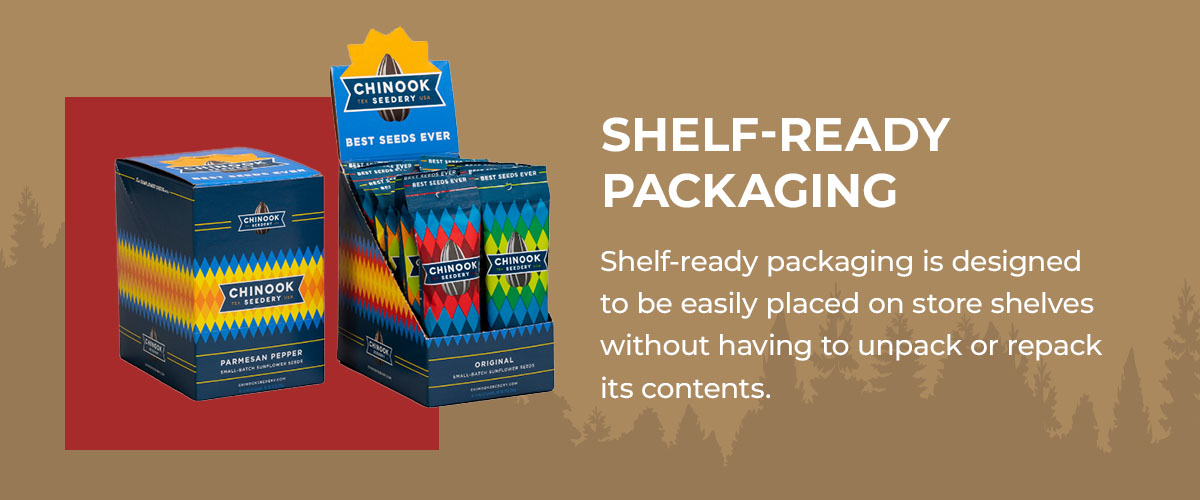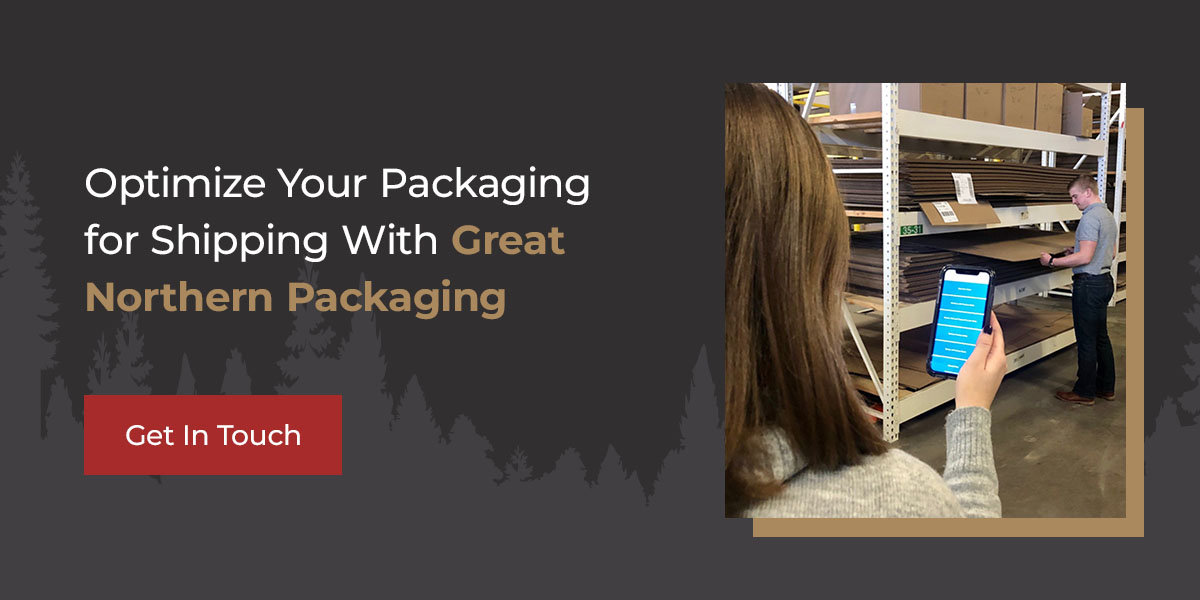
Shipping has made it possible for companies to transport goods and products quickly and efficiently over long distances. In turn, packaging plays a major role in shipping and logistics by protecting products during transportation, ensuring they arrive safely at their destination. Various types of packaging designs exist for different products along with protective packaging materials to provide extra support and cushioning.
As a business owner, you want to make sure your products are protected while reducing shipping costs and your environmental impact. The future of packaging is moving towards more sustainable and innovative solutions to meet evolving consumer needs. By knowing exactly how packaging plays a role in shipping and logistics, you can make informed decisions on how to promote your brand while also complying with shipping regulations.
The Purpose of Packaging in Shipping and Logistics
Packaging serves several important purposes:
- Protection: The biggest role packaging plays is in protecting products and preventing damage from external factors as much as possible during handling and transportation.
- Efficient handling: Packaging makes it easier for logistics personnel to move and organize shipments.
- Storage: Shipments often need to be contained in multiple locations or warehouses before reaching their delivery point, which means products need to be properly packaged for safe storage.
- Branding: Businesses get an extra opportunity to market themselves by branding their packaging to help promote their products. You can communicate specific information to recipients about the product, its caring instructions or even the best way to recycle the packaging materials.
- Compliance: Packaging ensures compliance with shipping regulations and standards, which is important for the smooth and legal transportation of certain goods or packages being shipped overseas. Non-compliance can result in damaged goods or delays in delivery.
Protective Packaging Materials and Techniques
The idea of protective packaging is to absorb any internal or external impact on items inside packages. Without proper cushioning and shock absorption, these items can break or get damaged during transit. Choosing the most appropriate protective packaging will be based on the fragility of your products, potential hazards and the shipping method.
Some common protective packaging materials businesses use include:
- Bubble wrap: The lightweight plastic material with small air-filled bubbles is a cost-effective way to provide cushioning and shock absorption.
- Foam: Foam inserts or sheets come in different types and forms, offering excellent protection for fragile products against impacts.
- Air pillows: Inflatable plastic pillows can fill void spaces in packages to prevent items from shifting during transit.
- Paper fill: As an environmentally friendly and recyclable industry standard, thick paper sheets are used for cushioning and separating items within a package.
- Molded packaging: These inserts are designed to fit a product in place perfectly. Molded pulp is an eco-friendly material made from recycled paper.
- Corner protectors: Plastic or cardboard pieces placed on corners of items to prevent damage from bumps or drops.
- Protective mailers: These envelopes contain a protective layer — usually in protective bubble wrap form — on the inside to reduce damage.
- Packaging inserts: Typically made of corrugated cardboard or paperboard, packaging inserts are versatile and often used for creating dividers within a single shipment.
- Void fillers: Void fillers are designed to fill empty spaces around items in packaging. They can be made of recycled or environmentally friendly materials.
Types of Packaging for Shipping
Each type of packaging is designed to suit different products and shipping methods. Shipping packaging is typically divided into three categories:
- Primary packaging: Also called sales or consumption packaging, this type is in direct contact with the product you’re selling. They include jars, cans, pouches and bottles and often display product information or logos on the labels.
- Secondary packaging: In the case of group packaging, items packed in primary packaging are grouped together into another package for efficiency, such as cardboard boxes, cartons, envelopes and mailers. Secondary packaging provides extra protection to primary packages. Ideally, secondary packaging should make it clear what’s inside.
- Tertiary packaging: Wooden crates, pallets and shipping containers are examples of tertiary packaging. They form the outer protective layer to in the transport of several secondary packaged items. It’s important for tertiary packaging to remain stable and take up minimal space during shipment.
However, hazardous items or products that need to remain a specific temperature during transit may require specialty packaging that follow local and state regulations. Other agencies, such as the U.S. Department of Transportation (DOT) and the Federal Aviation Administration (FAA), administer and enforce their own regulations for the safe shipment of hazardous goods.
Equipping Shelf-Ready Packaging for Shipping

Shelf-ready packaging is designed to be easily placed on store shelves without having to unpack or repack its contents. They help streamline the restocking process, reduce handling time and enhance product visibility. That’s why it’s important to ensure that this type of packaging is also sturdy enough to protect products during transportation.
Shelf-ready packaging can be equipped for shipping with these design considerations:
- Reinforce the packaging with a strong material to maintain its structural integrity.
- Add protective or wrapping elements to safeguard the items in transit.
- Balance aesthetics with functionality to create a cohesive packaging solution.
- Add clear perforated lines so it’s easy to find the pieces that need to be torn off.
- Use recyclable materials to make the disposal process easier and more eco-friendly.
Optimizing Shipping Processes With Efficient Packaging
With the following strategies, you can enhance your packaging efficiency:
- The right size: Avoid using oversized boxes that can incur unnecessary expenses. Use packaging that’s appropriately sized for your products to minimize dimensional weight, thereby reducing shipping costs.
- Raw materials: Choose packaging materials that provide adequate protection while minimizing any excess weight and waste. Opt for recyclable and lightweight materials to reduce your environmental impact.
- Technology: Implement automated packaging solutions to streamline your operations and reduce human error. Alternatively, find a service provider that can provide auto-packing solutions for your brand.
- Production and printing: Consider the design aspects of your packaging, such as branding, instructions, cautions, QR codes and other forms of identification.
- Testing: Evaluate and adjust your packaging strategies often based on feedback and shipping needs to improve your processes.
Optimize Your Packaging for Shipping With Great Northern Packaging
Recent trends are pointing towards smarter and more interactive packaging with sustainable and minimalistic designs. Lower the amount of packaging you use in all phases and use eco-friendly materials with lower life-cycle emissions to minimize anticipated packaging challenges in the future.
If you need expert advice on commercial, consumer, e-commerce or protective packaging, Great Northern Packaging has a wide range of options capable of meeting your needs. For more than 60 years, we’ve been supplying recyclable packaging solutions for nearly any application. We can help you improve on your current packaging with innovative printing, design and testing capabilities.
Let’s start a conversation and see how we can optimize your brand’s packing for shipment.







